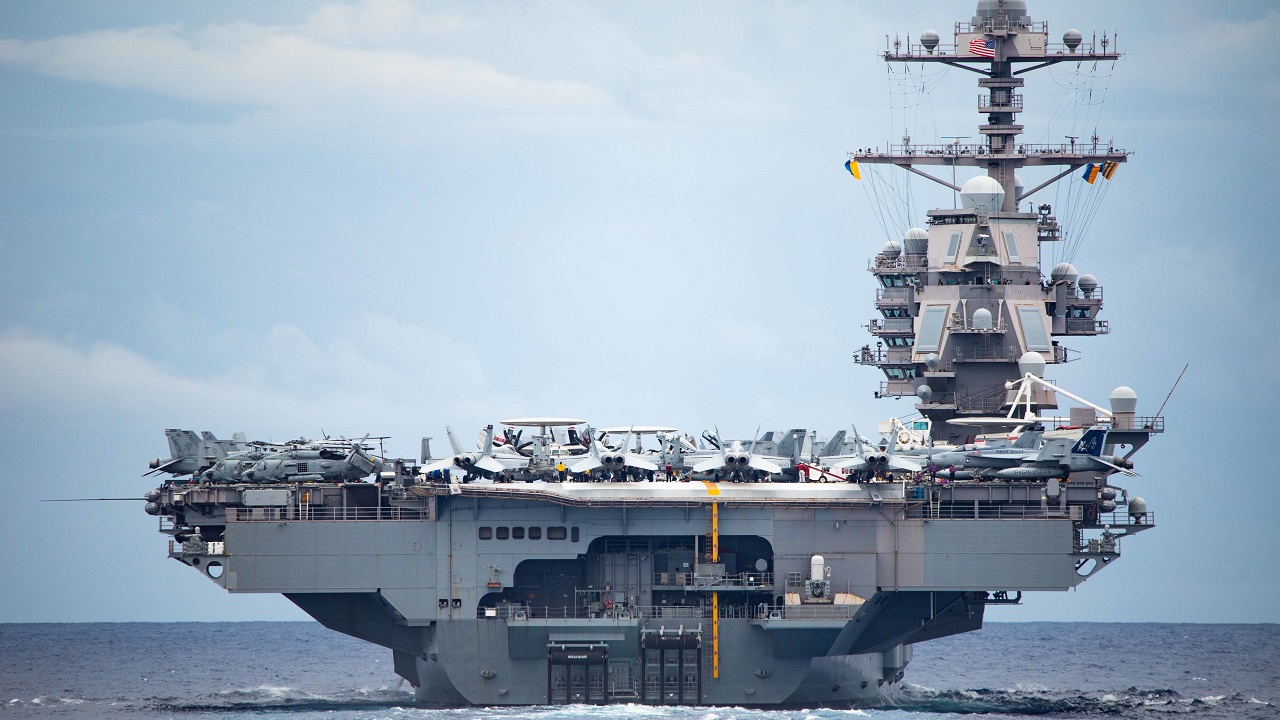The entry of the aircraft carrier USS Gerald R. Ford (CVN-78) into the Eastern Mediterranean marks an important show of solidarity with America’s NATO allies amid the ongoing war in Ukraine. The carrier first entered the Mediterranean Sea on June 15.
The warship previously visited Oslo, Norway in May in a show of solidarity with the host country amid heightened tensions between NATO and Russia.
USS Gerald R. Ford Reassures NATO Allies
“Our presence at sea throughout the deployment will provide reassurance to our allies and partners that sea lanes will remain open, and our joint operations will demonstrate our commitment to interoperability and maritime stability,” Rear Admiral Greg Huffman, commander of Carrier Strike Group 12, said in the Navy news release announcing the deployment.
The Ford cannot enter the Black Sea directly under the 1936 Montreaux Convention that bars capital ships belonging to non-Black Sea bordering nations from entering.
“The Ford is engaging with valued NATO allies from the Arctic to the Mediterranean seas in a mission of reassurance and enduring support, much as we in turn have valued NATO nations’ ship deployments to the Western Pacific to signal their mutual commitment to the security of the western Pacific,” Joe Sestak, a retired vice admiral who commanded the USS George Washington battlegroup and served as a member of Congress, told 19Fortyfive.
The Ford is the third American carrier to enter the Mediterranean since the Russians invaded Ukraine last year. It succeeded the USS George H.W. Bush and USS Harry S. Truman in patrol duties in the Mediterranean. The U.S. Navy maintained a carrier in the Mediterranean from December 2021 until April 2023 in a bid to deter Russia and keep the shipping lanes open.
The Ford’s battlegroup arrived in Turkey’s western Çanakkale province’s Gökçeada island Exercise Sage Wolverine on August 13. It was seen operating on August 21 with ships of the Turkish Navy. It visited Antalya, Turkey last Friday.
“The Gerald R. Ford Carrier Strike Group operated with our partners in the Turkish Navy and Air Force executing a series of multi-domain exercises prior to our arrival in Antalya,” Rear Adm. Erik J. Eslich, Commander, Carrier Strike Group 12, said of the operations with the Turkish Navy. “The exercises strengthened the bond we share with Türkiye and enhanced our common understanding of maritime tactics and procedures advancing interoperability objectives. Additionally, our collective efforts reinforce our shared goals of promoting peace and stability in the region.”
The carrier also engaged in joint exercises with the Greek navy.
A Warning to Russia
The carrier is located about 500-600 miles from the center of the Black Sea. In an emergency, the Ford could dispatch aircraft that could operate over the Black Sea and could travel near Ukraine and Russia if refueled by a tanker.
These exercises take place against the backdrop of Russia’s withdrawal from the grain deal.
“We have certainly urged Russia, both, I mean, pretty publicly but also through different agencies, to return to the grain deal. The ― the risk that Russia is taking is ― is starving other countries out of ― of needed grain that – that they depend on Ukraine for. So, we’ve urged Russia to return to the grain deal, to honor its commitment to ensure safe passage of grain out of Ukraine and into the countries that need it the most. But we don’t have any U.S. assets within the Black Sea,” Pentagon Deputy Press Secretary Sabrina Singh told reporters at an August 15 press conference.
John Rossomando is a defense and counterterrorism analyst and served as Senior Analyst for Counterterrorism at The Investigative Project on Terrorism for eight years. His work has been featured in numerous publications such as The American Thinker, The National Interest, National Review Online, Daily Wire, Red Alert Politics, CNSNews.com, The Daily Caller, Human Events, Newsmax, The American Spectator, TownHall.com, and Crisis Magazine. He also served as senior managing editor of The Bulletin, a 100,000-circulation daily newspaper in Philadelphia, and received the Pennsylvania Associated Press Managing Editors first-place award for his reporting.
From the Vault
The Navy Sent 4 Battleships To Attack North Korea
‘Sir, We Hit a Russian Submarine’: A U.S. Navy Sub Collided with a Nuclear Attack Sub

